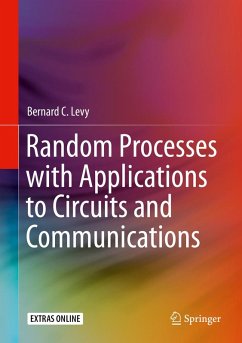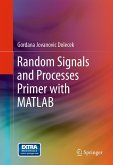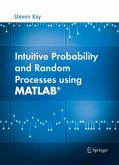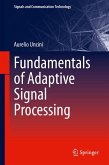This textbook is based on 20 years of teaching a graduate-level course in random processes to a constituency extending beyond signal processing, communications, control, and networking, and including in particular circuits, RF and optics graduate students. In order to accommodate today's circuits students' needs to understand noise modeling, while covering classical material on Brownian motion, Poisson processes, and power spectral densities, the author has inserted discussions of thermal noise, shot noise, quantization noise and oscillator phase noise. At the same time, techniques used to analyze modulated communications and radar signals, such as the baseband representation of bandpass random signals, or the computation of power spectral densities of a wide variety of modulated signals, are presented. This book also emphasizes modeling skills, primarily through the inclusion of long problems at the end of each chapter, where starting from a description of the operationof a system, a model is constructed and then analyzed.
- Provides semester-length coverage of random processes, applicable to the analysis of electrical and computer engineering systems;
- Designed to be accessible to students with varying backgrounds in undergraduate mathematics and engineering;
- Includes solved examples throughout the discussion, as well as extensive problem sets at the end of every chapter;
- Develops and reinforces student's modeling skills, with inclusion of modeling problems in every chapter;
- Solutions for instructors included.
Dieser Download kann aus rechtlichen Gründen nur mit Rechnungsadresse in A, B, BG, CY, CZ, D, DK, EW, E, FIN, F, GR, HR, H, IRL, I, LT, L, LR, M, NL, PL, P, R, S, SLO, SK ausgeliefert werden.
Es gelten unsere Allgemeinen Geschäftsbedingungen: www.buecher.de/agb
Impressum
www.buecher.de ist ein Shop der
buecher.de GmbH & Co. KG
Bürgermeister-Wegele-Str. 12,
86167 Augsburg
Amtsgericht Augsburg HRA 13309
Persönlich haftender Gesellschafter: buecher.de Verwaltungs GmbH
Amtsgericht Augsburg HRB 16890
Vertretungsberechtigte:
Günter Hilger, Geschäftsführer
Christian Sailer, Geschäftsführer
Sitz der Gesellschaft:Augsburg
Ust-IdNr. DE 204210010









